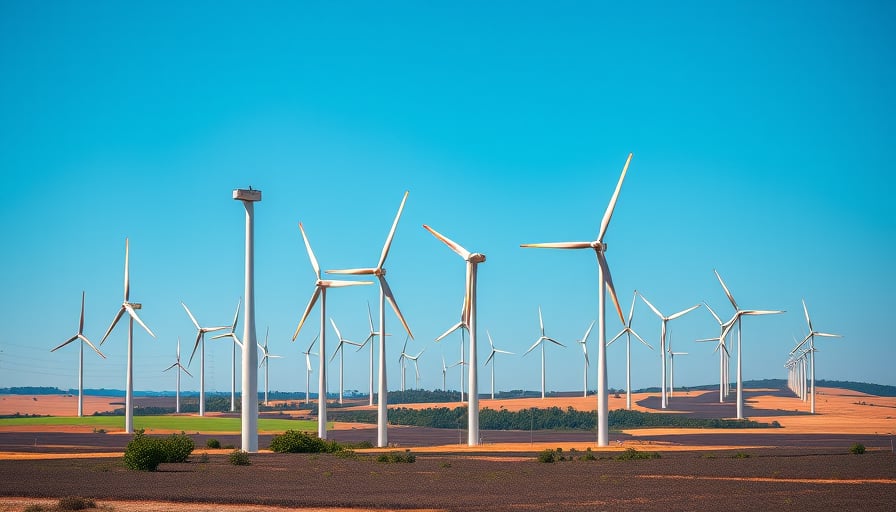Corporate Implications of Macro‑Economic and Regulatory Shifts for Centrica PLC
Centrica PLC, a leading integrated energy provider in the United Kingdom, has experienced a moderate appreciation in its share value over the past trading session. While the precise percentage increase remains unreported, the upward trajectory can be attributed to a confluence of macro‑economic and sector‑specific dynamics that directly influence the company’s operating environment.
1. Macro‑Economic Context
1.1 Easing of US–China Trade Tensions
Recent diplomatic developments between the United States and China—including the initiation of new trade negotiations and the US indication of a postponement of further tariff escalations—have reduced uncertainty across global supply chains. For a company such as Centrica, which relies on imported equipment and technology for power generation, transmission, and distribution (GTD) infrastructure, this de‑risking translates into more predictable procurement costs and smoother capital‑allocation cycles. Market sentiment, buoyed by this geopolitical thaw, has manifested in increased liquidity on the London Stock Exchange and a broader rally in energy‑sector equities.
1.2 Growth of Renewable Energy Demand
The UK’s commitment to net‑zero emissions by 2050 has accelerated investment in renewable assets such as offshore wind farms, solar photovoltaic arrays, and advanced storage solutions. Centrica’s diversified portfolio—encompassing residential smart‑metering, commercial HVAC controls, and distribution network management—positions the company to capture a larger share of the renewable integration market. This strategic alignment is reflected in the recent uptick in the company’s valuation.
2. Technical Challenges in Power System Modernization
2.1 Grid Stability in a High‑Renewable Regime
The penetration of variable renewable energy sources (VRE) imposes stochastic fluctuations on the bulk power system. Maintaining synchronism requires enhanced voltage regulation, dynamic load‑balancing, and fast‑response frequency control. Centrica’s investment in advanced distribution management systems (ADMS) and micro‑grids is essential to mitigate cascading faults and to preserve system inertia. Moreover, the integration of inverter‑based resources demands coordinated controls to support inertia emulation and grid‑code compliance.
2.2 Transmission Constraints and Congestion Management
The UK’s transmission network, operated by National Grid, is approaching its capacity limits in key corridors that deliver offshore wind output to central demand hubs. Congestion pricing mechanisms and the deployment of high‑voltage direct current (HVDC) links are critical to redistribute load and to enhance the effective capacity of existing corridors. Centrica’s role as a distribution operator requires seamless interfacing with the transmission system to ensure that peak demand peaks are adequately met without incurring unnecessary congestion penalties.
2.3 Distribution‑Level Resilience and Flexibility
At the distribution level, the increasing prevalence of distributed energy resources (DERs) such as rooftop solar, electric‑vehicle chargers, and battery storage systems necessitates granular control over voltage and fault protection schemes. Upgrading protective relays and implementing real‑time state estimation enable Centrica to maintain resilience while enabling bidirectional power flows. The implementation of advanced energy‑management platforms also allows for demand‑response initiatives that reduce peak load and defer infrastructure upgrades.
3. Regulatory and Economic Drivers
3.1 Energy Market Design and Rate Structures
The UK’s Electricity Market Reform (EMR) and the Energy Price Guarantee (EPG) frameworks shape how utility companies recover costs and distribute revenues to consumers. Centrica must navigate a mix of regulated tariffs for low‑volume, low‑margin services and market‑derived revenues for high‑volume, high‑margin renewable generation. The transition toward time‑of‑use (TOU) tariffs and smart‑metering is reshaping consumer behavior, thereby influencing the company’s forecasting models for load and revenue.
3.2 Capital Expenditure and Financing Regimes
Regulatory bodies such as the Office of Gas and Electricity Markets (Ofgem) impose capital‑investment caps and recovery schedules that directly affect utility profitability. Centrica’s strategic allocation of capital—particularly toward grid‑modernization projects—must balance the requirement for rapid deployment with the need to maintain a favorable cost of capital. Access to green bonds and low‑carbon financing instruments can offset the higher upfront costs associated with renewable integration.
3.3 Consumer Cost Implications
The dual mandate of ensuring reliability and affordability places constraints on how cost savings from renewable integration are passed on to consumers. While reductions in wholesale energy costs can be reflected in lower tariffs, the need to recover fixed network costs may lead to incremental charges. Centrica’s transparency in tariff design and its communication strategy are therefore pivotal in maintaining consumer trust during periods of transition.
4. Investment Outlook and Risk Management
4.1 Infrastructure Investment Requirements
Achieving a resilient, high‑renewable grid requires substantial investment in both high‑voltage infrastructure (HVDC links, smart transformers) and low‑voltage upgrades (grid‑smart sensors, battery storage). Centrica’s recent capital allocation plans indicate a focus on:
- Grid‑Smart Enhancements: Deploying AI‑driven predictive maintenance to reduce unplanned outages.
- Renewable Integration Projects: Supporting the commissioning of offshore wind farms and community solar projects.
- Resilience Measures: Installing micro‑grid solutions in critical industrial sites to safeguard against supply disruptions.
4.2 Risk Mitigation Strategies
Key risks include regulatory changes, technology obsolescence, and supply‑chain disruptions. Centrica’s hedging policies—combining fixed‑price procurement for critical equipment with strategic long‑term supply contracts—are designed to mitigate price volatility. Additionally, participation in industry consortia allows for shared learning and collective bargaining power.
5. Conclusion
The modest rise in Centrica PLC’s share price reflects investor confidence in the company’s ability to navigate an evolving macro‑economic landscape marked by geopolitical stabilization, robust renewable growth, and a favorable regulatory framework. Technically, Centrica’s focus on grid stability, renewable integration, and infrastructure investment is essential to meeting the dual challenges of sustaining reliability while transitioning to a low‑carbon power system. Economically, the company’s strategic rate structures and capital‑investment discipline position it to deliver value to both shareholders and consumers as the UK energy market continues its transformation.
